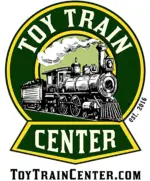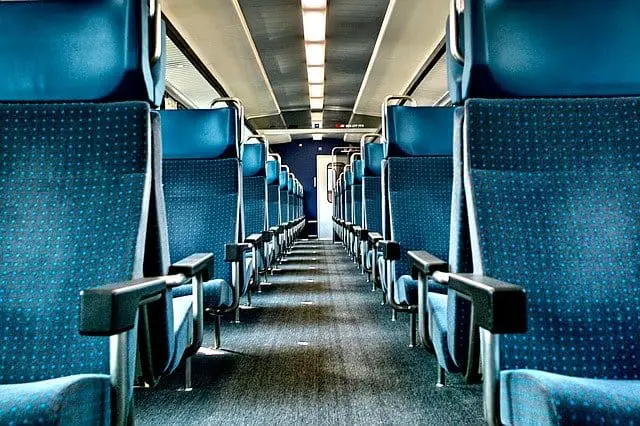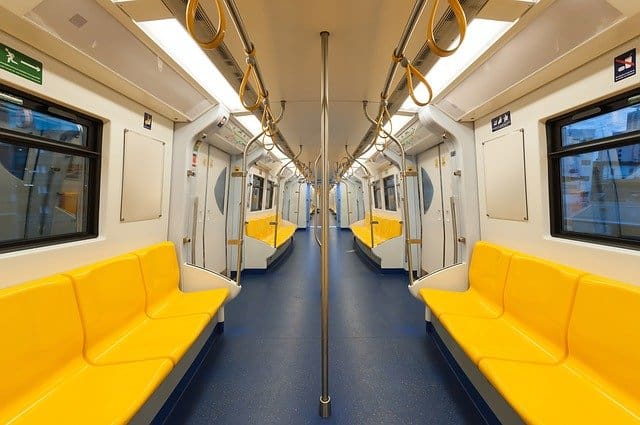A passenger coach or car is the carriage the passengers travel in when embarking on a train journey. It is not always just an area for seating, but also for dining, sleeping, and storage of personal belongings; of course restrooms too in some cases. This article explains all the different types of cars and what their features are.
Passenger car
A passenger car contains the general seating areas you picture when you imagine sitting on a train. Normally seats in rows of 2, facing forward or backward, and potentially 4 seats together all sharing a table. This is a pretty universal layout that all trains stick to. Sometimes inter-city trains may have side-facing seats to allow more standing room, but this is more common in subway systems.
Dining car
The dining car may also contain seating areas. These could be the same as a normal passenger car or as fancy as the restaurant cars on the Orient Express. These cars often contain a bar and are staffed with professional servers. They are more common on long haul trains.
Sleeper car
A sleeper car often contains small individual cabins that sleep 2-4 people. They are only found on long haul journeys and are far more expensive than a standard ticket, such as the Trans-Siberian Railway or the Trans-Mongolian Railway. A sleeper car may also contain a shower room, depending on the length of your journey and which specific railway you travel on.
Baggage car
A baggage car is mostly just storage. To maximize room for passengers, baggage cars are used for storing people’s suitcases and other belongings, such as bicycles and other baggage. They can be found on long and short-haul journeys, typically they also contain the washrooms.
What they all have in common
All train cars are fitted to the same gauge as the locomotive themselves and they also contain their individual entrances and braking systems. All passenger cars are designed to be interchangeable, meaning they all need their own fully controlled systems. Each car contains a set of breaks that remain deactivated until the train engineer has need for them. Each car also has its own control panel designed to lock and unlock the passenger doors and thus they are designed to be completely autonomous should it need to be.
All cars receive their power through bus cables or directly from an axel powered generator. Because the axels are constantly turning, they can be used to charge large batteries that the car then uses as its primary power source. These cars are also fitted with climate control systems, powered via the bus cables or batteries. If you are lucky there can also be wireless internet set up in the carriage.
You can read more about the anatomy of a train and its cars here.
Conclusion
Passenger cars are far more advanced than many people realize, they all have to be capable of being self-controlled as you never know which car will end up where. This article should have given you everything you need to know about passenger cars/coaches; if you find yourself wanting to learn more the above hyperlink is an excellent source of information.






